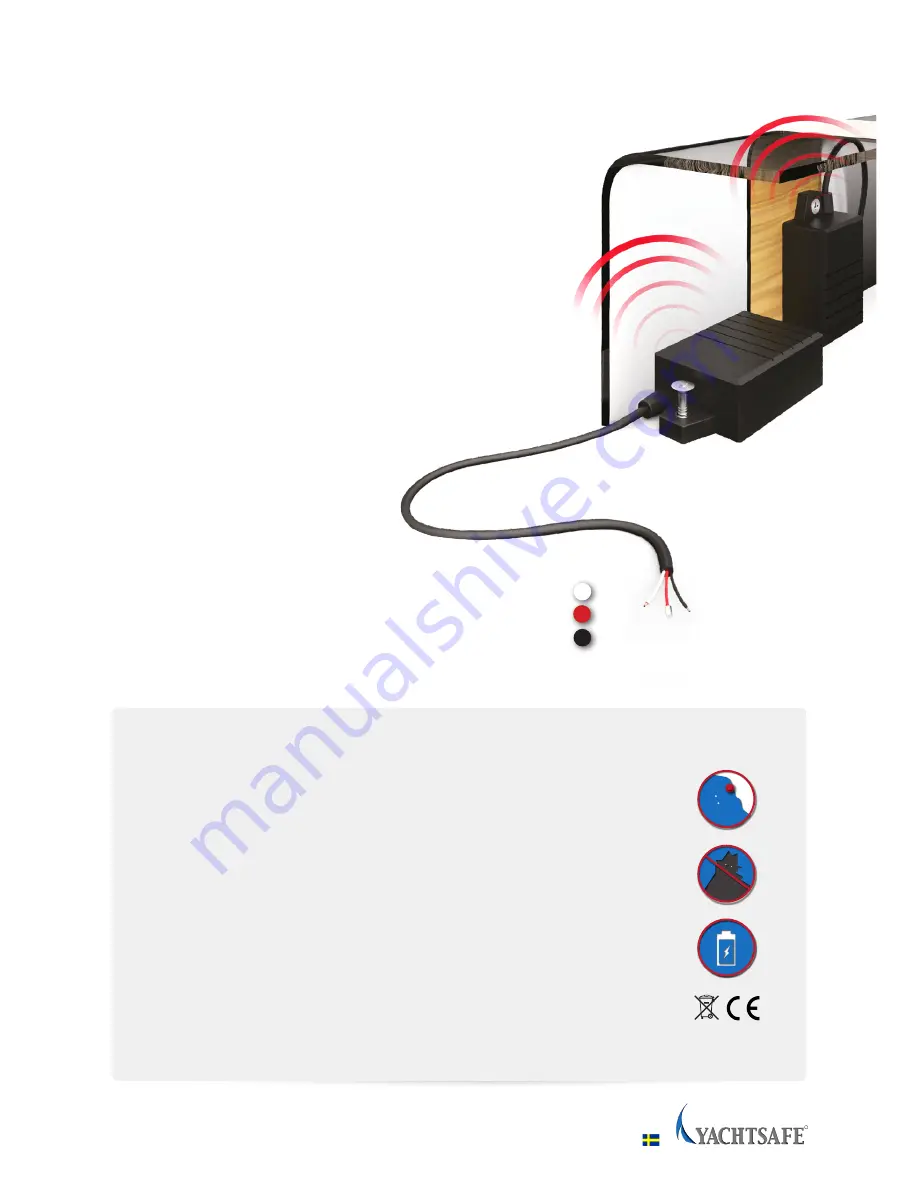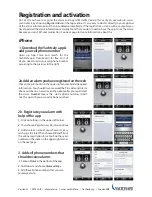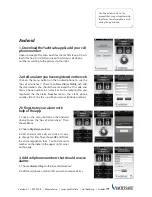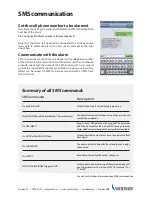
Manual
YachtSafe GPS-alarm G31, G32 & G33
1.
Mount the alarm unit standing vertically or lying horizontally
according to the picture. The GPS-signal passes normally through
wood, plastic and glass but not solid metal. Try to place the alarm
unit in an open environment to get a strong GPS-signal. The
GPS-signal also gets stronger with fewer layers of materials. If the
alarm is used in a metal boat the alarm unit should then be placed
close to an window. Also note that computers and transformer
may jam the GPS-signal. If you don’t get any GPS-reception with
the app, or if the app often shows an old position, then the alarm
unit has to be moved. However, note that it can take some
hours to get the GPS-position for the
fi
rst time
when the alarm is new.
Installation of the alarm unit
2.
Connect the alarm unit to a
voltage source (red cable = Plus,
black cable = ground). G33 has
a different cable and has to be
installed by an authorized
fi
tter.
The white cable (The output of the
alarm) goes to ground when it’s
active. With installation of a siren
red cable goes to red and black
cable the white on G32.
Out 0V
8-29VDC
0V/Ground
Connect fuse 3A
Technical speci
fi
cation
Size:
Weight:
Temperature:
External supply (VDC):
Power consumption:
GSM/GPS antennas:
GSM band:
Internal battery:
Enclosure:
Tracking time on internal battery:
Alarm detection time in low power
consumption mode:
74x48x28 mm
150 g
-30 to +70 °C*
9-28 V
2 or 7 mA
built-in
850/900/1800/1900
2 Ah
IP68
up to 3 weeks
up to 6 weeks
*The GSM-function is working from -20°C to +55°C
Glass P
lastic W
ood
wireless alarm and control solutions
R
Version 01
l
VETEL AB
l
l
www.yachtsafe.se
l
Gothenburg l Sweden
N 30 32.89’
E 114 18.04’




